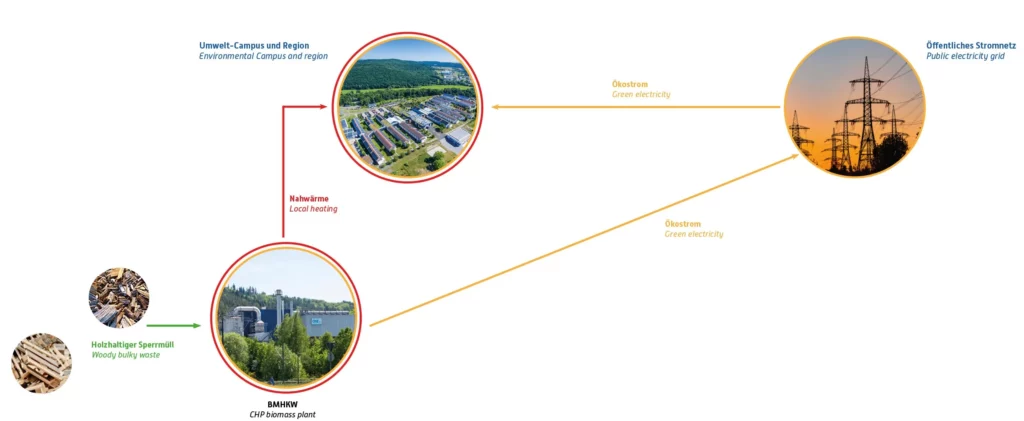Biomass powerhouse: Generating energy from biogenic residues
Bioenergy is environmentally friendly and is obtained from renewable raw materials (e.g. wood) or residues (e.g. straw, organic waste, liquid manure). These raw materials can be used to produce electricity, heat or fuels, for example biodiesel, bioethanol, biomethane.
Heat and power supply at the Environmental Campus is based on sustainable utilisation of regional, non-fossil residues. The heat demand is supplied from the nearby combined heat and power (CHP) biomass plant via an approx. 500 m long district heating network.

Combined heat and power (CHP) biomass plant
In this CHP biomass plant, regional waste wood is used as fuel thus conserving natural resources and reducing greenhouse gas emissions. The combustion generates hot steam, which is used to produce electricity and heat.
Bioenergy
- is an important building block in the energy transition.
- contributes to strengthening regional added value.
- increases regional security of supply.